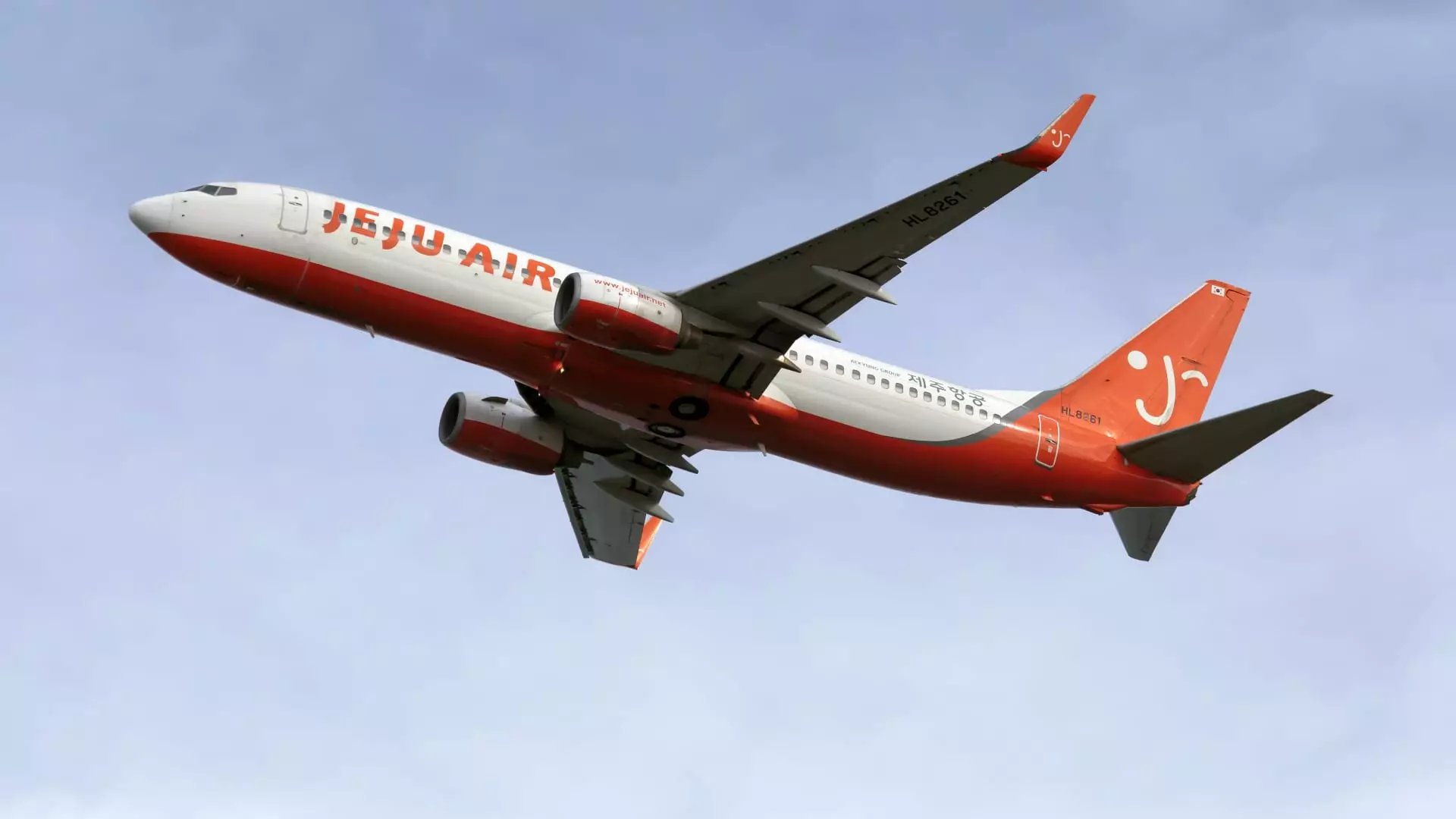The recent disaster involving Jeju Air Flight 7C2216 has shocked not only South Korea but the aviation industry worldwide. This tragic event, occurring at Muan International Airport, has raised urgent questions about aircraft safety protocols and regulatory measures surrounding one of the world’s most popular airplane models—the Boeing 737-800. With a death toll that emphasizes the gravity of the incident, immediate emergency inspections have been ordered by South Korea’s acting President, highlighting a sense of urgency that seeks to find clarity amidst chaos.
The Boeing 737-800 has been a workhorse in commercial aviation for decades, noted for its robust safety record and widespread use—accounting for approximately 17% of the global passenger jet fleet. Despite its commendable history, the corollary to this incident cannot be overlooked; this aircraft has a significant operational presence, with nearly 4,400 units in service and an average age of about 13 years. Investigators are now faced with the dual challenge of assessing the plane’s maintenance history while grappling with the shocking nature of the crash.
The aircraft involved in the accident had been operational since 2017 and previously flown under the banner of Ryanair. The incident raises eyebrows regarding maintenance practices and operational protocols, especially as it operated for five years before this catastrophe. With such an extensive track record, many in the industry are left wondering whether design flaws will be uncovered amid the investigation. Analysts like Richard Aboulafia express skepticism over the prospect of finding a core issue with the aircraft’s design, given the longstanding safety reputation associated with the 737 series.
The bizarre nature of the incident, chiefly the plane belly-landing without its landing gear deployed, is already a topic of intense scrutiny. Investigators must decipher why the crew failed to execute a manual landing gear deployment, an option even available during hydraulic failures. The design allows for emergency measures, and yet, operational decisions in the heat of the moment seem to elude simple explanations.
One intriguing theory is the possibility of a bird strike. Such an event could incapacitate engines, potentially leaving pilots with little time to respond with emergency procedures. Jeff Guzzetti’s insights suggest that if this indeed were the case, the crew would have faced a Herculean task of overcoming panic and executing checklists to save lives. The fundamental question remains—could this incident have been averted with better training or situational awareness on behalf of the flight crew?
In addition, Guzzetti noted that the situation may have been more salvageable were it not for the plane striking a hard wall at the end of the runway. This leads to further dialogues within aviation safety discussions—whether infrastructure can be improved to provide additional safety for flights in distress.
The investigation process, spearheaded by the National Transportation Safety Board (NTSB), is poised to extend beyond a year. As the U.S. team collaborates with Boeing and the FAA, the inquiry will take a multifaceted approach. The long duration of such investigations raises concerns about transparency and public confidence in aviation safety standards. Without prompt accountability and answers, mistrust may brew, potentially impacting air travel confidence among passengers globally.
The incident serves as a wake-up call, particularly for regulatory bodies and airlines in South Korea, to reevaluate safety protocols and training programs. While the repercussions of one flight’s tragic mistakes may feel localized, they underscore systemic vulnerabilities that could affect air travel in broader contexts.
The tragic loss of life on Jeju Air Flight 7C2216 compels us to reflect deeply on the multifactorial aspects of aviation safety and operational protocols. Amid the heartache of loss, the opportunity for learning emerges, reminding stakeholders of the importance of vigilance, preparation, and continuous improvement in aviation oversight. This calamity should not only prompt an investigation into potential failures but also inspire a wave of reform that seeks to strengthen the resilience of air travel against unforeseen crises in the future. While the reality is stark, the pursuit of safety must remain unwavering.


Leave a Reply